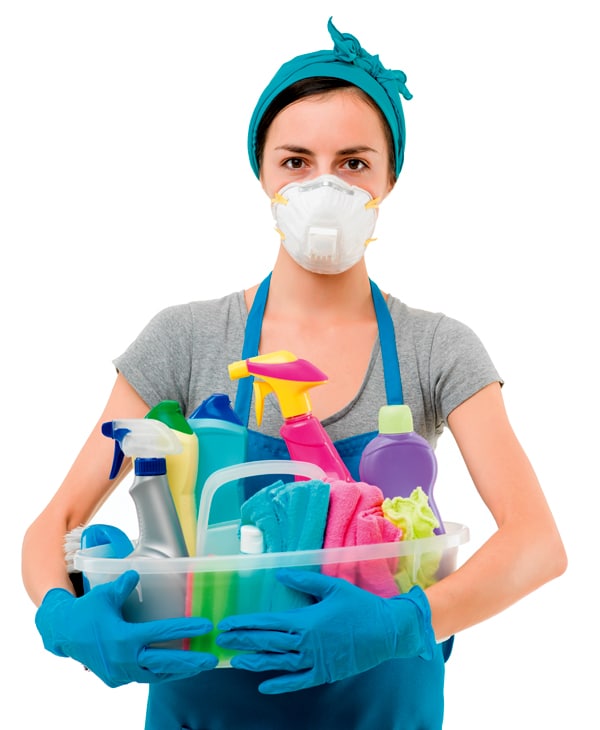Editor’s note: Have you seen the new Catster print magazine in stores? Or in the waiting area of your vet’s office? This article appeared in our November/December 2016 issue. Click here to subscribe to Catster and get the bimonthly magazine delivered to your home.
We all want to keep our homes clean and smelling fresh. But are elements found in common cleaning products potentially poisonous to your cat?

Phenols
Found in many pine-scented cleaning products — or in any cleaner whose name has the word “sol” in it. Phenol-containing cleaners include floor cleaners and disinfectants. They’re also in paint and varnish removers, some synthetic resin, and rubber adhesives. Cats can ingest these chemicals after walking across recently cleaned floors and licking their paws or by inhaling or touching disinfectants. Phenols can cause burns, hyperventilation, and even destroy proteins in cats’ cells, leading to liver, heart, and kidney damage.
Artificial fragrances

Found in virtually every cleaning product: laundry detergents, fabric softeners, dryer sheets, carpet deodorizers, spray deodorizers for air and fabric, some cat litter, plug-in air fresheners, and even some pet odor removers. Some cats exposed to these chemicals may develop skin and respiratory allergies.
Ammonia

Found in oven and window cleaners, it irritates mucous membranes — the mouth, nose, and eyes, primarily. If chlorine and ammonia mix, it can create a chemical reaction that leads to the formation of chlorine gas, hydrochloric acid, and a number of other potentially fatal chemicals. Chlorine gas is heavier than air and settles in lower-lying areas (like near floors), making feline exposure more likely.
Chlorine
Found in bleach, toilet bowl cleaners, automatic dishwashing detergents, disinfecting wipes, all-purpose cleaners, and mildew removers. When exposed, cats may develop respiratory problems, eye and skin irritation, and, if the chlorine is ingested in enough quantity, mouth and esophageal burns.

Permethrins
Insecticides in some flea treatments and shampoos for dogs, as well as in a number of household products like bug spray or ant powder. Cats exposed to permethrins experience muscle tremors, seizures, drooling, fever, dilated pupils, and lack of coordination (staggering).
Naphthalene
Found in mothballs, it can lead to vomiting, diarrhea, increased drinking and urination, and seizures. Heavy exposure or accidental ingestion can be potentially life threatening.
Safely clean
Use pet friendly cleaners, and both you and your cat will breathe easier.
- Try nontoxic, plant-based, fragrance-free, biodegradable cleaners. There are plenty that work well.
- Substitute white vinegar and water for that ammonia-based window cleaner.
Use cedar in your closet and sweater boxes rather than mothballs; as a bonus, your clothes will smell a lot nicer! - For bad odors, open a window or two to get fresh air inside. Some air purifiers also remove odors, but research before getting one that will do that job.
- Try litters made from natural products. Some, such as corn, have a light, natural fragrance that some people (and most cats) find quite pleasant.
About JaneA Kelley: Punk-rock cat mom, science nerd, animal rescue volunteer and all-around geek with a passion for bad puns, intelligent conversation, and role-play adventure games. She gratefully and gracefully accepts her status as chief cat slave for her family of feline authors, who have been writing their award-winning cat advice blog, Paws and Effect, since 2003.







